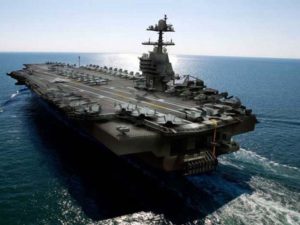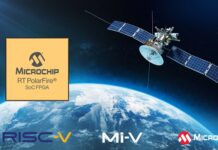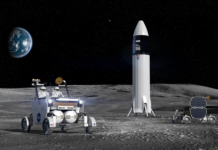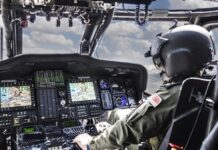
WASHINGTON — The U.S. Navy might not have to conduct shock trials on its new aircraft carrier. That means the Ford could be on deployment much sooner, easing the burden on the Navy’s overstretched carrier fleet.
The House Armed Services Committee’s Seapower and Projection Forces Subcommittee is inserting language in its markup of the 2018 National Defense Authorization Act that would strike the requirement to send the ship into shock trials before its first deployment. Carrying out full-ship shock trials, or FSST, has been the plan since Congress mandated it in the 2016 NDAA.
The Navy could still chose to do the shock trials on Ford if it wanted, according to House aides familiar with the matter. The plan to have the Navy perform FSSTs for Ford was pushed by Michael Gilmore, the former director of the office of test and evaluation, and supported by Senate Armed Services Committee Chairman Sen. John McCain, R-Ariz.
If enacted, it would be welcome news to fleet schedule planners who opposed the move because it would delay Ford’s first deployment. The fleet has been strained under the weight of unrelenting requirements for its forces and budget cuts that have eaten away at readiness and created backlogs in the shipyards.
The carrier successfully completed its acceptance trials May 26 after the Navy’s Board of Inspection and Survey completed its assessment of the ship and was accepted by the Navy on June 1.
“The Navy initially didn’t want to shock-trial [Ford], they wanted to shock-trial [John F. Kennedy],” an aide to HASC said. “So … by taking out the shock trial associated with CVN-78, we are at least able to accelerate to Ford delivery by at least a year.”
The Navy is still working out the kinks in several new technologies, including the Electromagnetic Aircraft Launch System and the Advanced Arresting Gear. The service originally had plenty of time to do that, because it wasn’t scheduled for deployment until 2022.
But if they can skip the shock trials, Fleet Forces Command would likely get to move up to Ford’s first deployment to 2019 or 2020, which was the original plan. That would put pressure on the Navy and contractor General Atomics to speed up the process.
Getting the Ford earlier would be a win for Fleet Forces, which has been trying to get its new optimized fleet response plan on track. The schedule change would ease the pressure as the Navy looks to maintain a carrier presence off North Korea and in the Arabian Gulf as often as possible, said Bryan Clark, an analyst for the Center for Strategic and Budgetary Assessments.
“Ultimately if they don’t have to do shock trials it means you can more quickly reduce the stress on sailors and ships,” he said. “Once the Ford comes online you can have the East Coast carriers essentially cover the Middle East with short gaps and have the West Coast carriers fill the gaps in the Pacific while [the carrier] Reagan is in its spring maintenance availability.”
By: David B. Larter
Source: defensenews.com


















